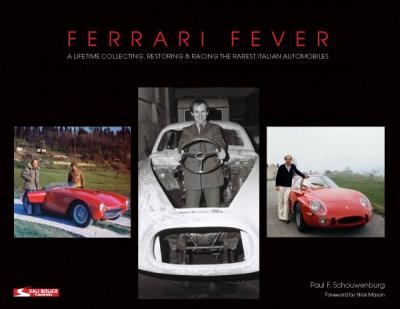
Car photography often evokes the same recycled tropes. Predictably slick, hi-spec images on the front pages of glossy magazines, or huge blow-ups on giant billboards which have one designed aim: to sell a lifestyle. But our relationship with cars is so much more meaningful than these images might suggest. Like the camera, the car has changed the way we explore the world. With cars came road trips, and with road trips came some of the most important photographic documentaries of our time. A car is a vehicle not just for transport but for our hopes, desires and dreams. In Smoke and Mirrors, a selection of world-renowned and up-and-coming photographers come together to pay tribute to the car. From Nick Turpin’s images of ‘donut’ skid marks, Todd Hido’s painterly landscapes taken through wet windscreens and William Green’s shots of sleeping Tokyo taxi drivers, these photographs display cars at their most playful, introspective and meaningful, reminding us that there is more to them than just metal and machinery – for cars are emotionally intertwined with the lives we live.

After the first ever intercontinental rally – the London-Sydney in 1968 – there was widespread enthusiasm for an even more difficult test. With the Football World Cup being held in Mexico in 1970, it was the perfect opportunity to hold a parallel, much tougher challenge – the World Cup Rally.
Organisers John Sprinzel and John Brown secured sponsorship from the Daily Mirror and planned a unique high-speed event, lasting six weeks and covering 16,000 miles from London to Mexico City via some of the most varying, tortuous and difficult terrain on three continents.
Serious works teams such as Ford and British Leyland spent tremendous amounts choosing and developing new cars, completing months-long route surveys, and analysing every detail of diets, oxygen provision, and the number of crew members. Despite all this planning, out of an entry of more than 100, only 23 cars made it to the finish.
It was then, and remains now, the toughest rally of all time.
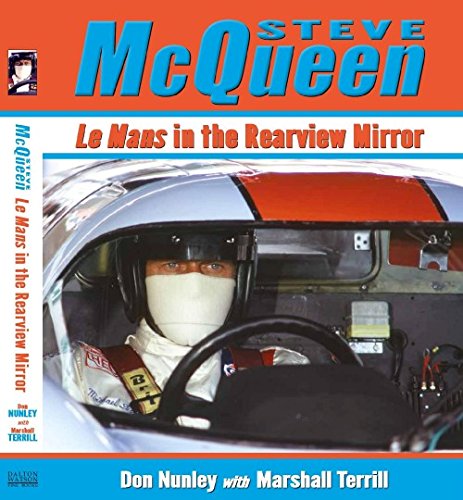
My name is Don Nunley, and I was the propmaster on Le Mans. While authors, documentary filmmakers, motoring scribes and racing enthusiasts have told and retold the story of Le Mans for decades – and for the most part they got right – I was actually right there as it all unfolded. There was nothing positive to say about the 106-minute motion picture at the time we started making it in June 1970. Six months later when filming mercifully ended, there was no wrap party, no toasts, no grand farewells; everyone just quietly went away, thanking God their ordeal was finally over. Steve McQueen was a real life racing fanatic, and Le Mans was supposed to be his cinematic dream come true. But the movie left him with bitter feelings and lasting emotional dents in his armor. There were conflicts with directors, personal excesses, budget woes, a war with the studio, a shutdown, months of delays, an unfortunate accident that left one driver without a leg, and rumors that the production company hushed up the death of a second unit crew member. In one fell swoop, McQueen ended a 15-year marriage, severed ties with his longtime agent and producing partners, did away with his production company and lost a personal fortune, not to mention control of the passion project he had planned to make for over a decade. It has taken me years to understand and digest the complex phenomenon of Le Mans, which decades after its crash-landing at the box office and savaging by critics has finally found its vindication and the approbation its star dreamed of before things took such a wrong turn when the cameras started rolling. Steve McQueen would be blown away to see that Le Mans has left an indelible legacy in the auto racing world and movie industry.
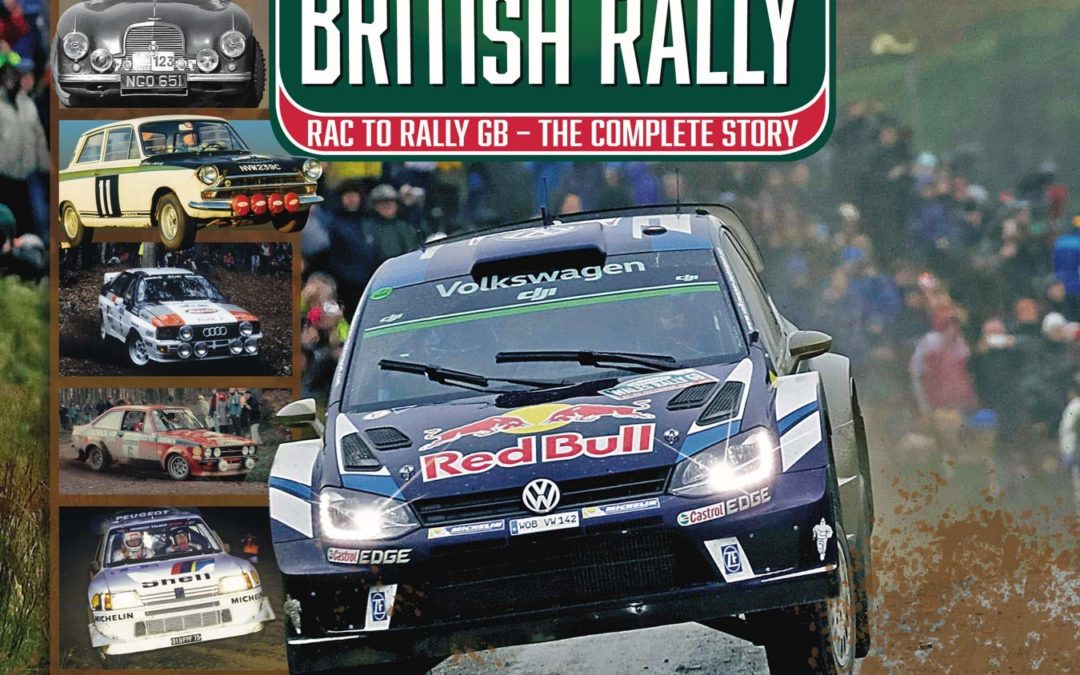
This is the complete history of British international rally events, starting with the very first RAC rally of 1932, which included 1,000 miles of road motoring, and when a mere three driving tests were needed to produce a result. By 1951 an international permit had been achieved, a speed element was included, and the ‘Rally of the Tests’ ran until 1960. From 1961, the event took on a number of high-speed, loose-surfaced Special Stages, the Scandinavian influence became clear, and the event took on a World Championship qualification in 1973. In that time, competing cars had progressed from having perhaps 50bhp to at least 300bhp, and even more high-tech machines with 500bhp and four-wheel-drive would follow.
By then the RAC Rally was – and remains, in its present form as Wales Rally GB – one of the three most important rallies in the world, every ‘works’ team makes sure that it is represented, and it has a very important image throughout the world. Major sponsors embraced the event from the 1960s – first The Sun and Daily Mirror, then Lombard, and Network Q, and finally the Welsh government – which in recent years has become a very high-profile showcase for the world’s most exciting cars. Few other British International events have such a long and distinguished record. The 75th running of this event takes place in 2019.
With year-by-year accounts of all events in the Rally’s history, copiously illustrated with period photographs, and covering the various challenges posed by such crises as foot and mouth disease, weather conditions and controversy over rules and regulations, this book is the definitive guide.

Automotive journalist Karl Ludvigsen, born in 1934 in the USA and one of the greats in automobile history, opens his archives in this book. In more than 50 years as a motor journalist, author, and an automobile historian, he has accumulated a comprehensive knowledge of his subject, and has met all the prominent figures of the automobile’s golden age.
In this book we meet Stirling Moss, Jackie Stewart, Juan Manuel Fangio, Bruce McLaren, Emerson Fittipaldi, Dan Gurney and many more. A look in ‘Ludvigsens rear-view mirror’ takes us back to a time when cars definitely had combustion engines, when motor races were life and death struggles, and groundbreaking successes were made in the fields of safety, design and technology.

TV presenter and all-round car nut Ant Anstead takes the reader on a journey that mirrors the development of the motor car itself from a stuttering 20mph annoyance that scared everyone’s horses to 150mph pursuits with aerial support and sophisticated electronic tracking.
The British Police Force’s relationship with the car started by chasing after pioneer speeding motorists on bicycles. As speed restrictions eased in the early twentieth century and car ownership increased, the police embraced the car. Criminals were stealing cars to sell on or to use as getaway vehicles and the police needed to stay ahead, or at least only one step behind. The arms race for speed, which culminated in the police acquiring high-speed pursuit vehicles such as Subaru Impreza Turbos, had begun.
Since then the car has become essential to everyday life. Deep down everyone loves a police car. Countless enthusiasts collect models in different liveries and legendary police cars become part of the nation’s shared consciousness.
Ant Anstead spent the first six years of his working life as a cop. He was part of the armed response team, one of the force’s most elite units. In this fascinating new history of the British police car, Ant looks at the classic cars, from the Met’s Wolseleys to the Senator, the motorway patrol car officers loved most, via unusual and unexpected police vehicles such as the Arial Atom. It’s a must-read for car enthusiasts, social historians and anyone who loves a good car chase, Cops and Robbers is a rip-roaring celebration of the police car and the men and women who drive them.
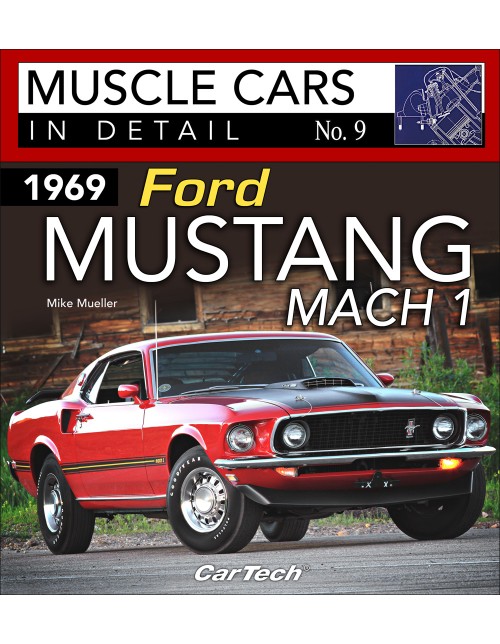
By the time the 1969 model year rolled around, it was well established that muscle cars were fast and plentiful. Every manufacturer had at least one corner of the showroom where the “go fast” guys could congregate and discuss the merits and time slips of the latest performance offerings. Competition being what it was, the manufacturers were looking for ways to entice potential buyers to choose their product over ever-increasing offerings from the competition. Some manufacturers tried to accomplish this with affordable prices, some tried fancy marketing schemes, and some created a look and a style that screamed “performance” even when standing still.
The 1969 Mach I was Ford’s attempt to create a package and a style to match the performance of its recently released and very potent 428-ci Cobra Jet engine package. Displacing the still-available but more conservative GT trim, the Mach I included unique and innovative graphics and mechanical innovations including shaker hood scoops, dual racing mirrors, deluxe interiors, competition suspension, dual chrome exhaust tips, and blacked-out hoods. The result was a wildly popular model that sold more than 70,000 units, compared to slightly more than 5,000 GT models for the year.
Each volume in the In Detail Series provides an introduction and historical overview, an explanation of the design and concepts involved in creating the car, a look at marketing and promotion, an in-depth study of all hardware and available options, and an examination of where the car is on the market today. Also included are paint and option codes, VIN and build tag decoders, as well as production numbers.
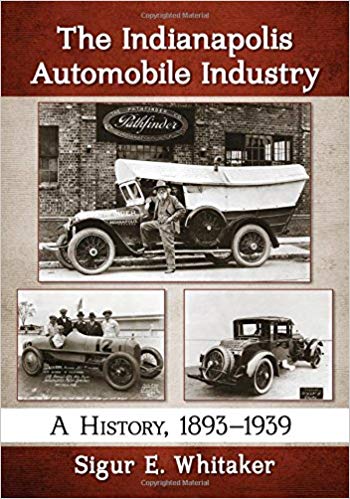
In 1893, Indianapolis carriage maker Charles Black created a rudimentary car–perhaps the first designed and built in America. Within 15 years, Indianapolis was a major automobile industry center rivaling Detroit, and known for quality manufacturing and innovation–the aluminum engine, disc brakes, aerodynamics, superchargers, and the rear view mirror were first developed there. When the Indianapolis Motor Speedway opened in 1909, hometown manufacturers dominated the track–Marmon, Stutz and Duesenberg. The author covers their histories, along with less well known contributors to the industry, including National, American, Premier, Marion, Cole, Empire, LaFayette, Knight-Lyons and Hassler.

Three quarters of a million people are in a plane somewhere right now. Many millions travel by air each day. For most of us, the experience of being in an airport is to be endured rather than appreciated, with little thought for the quality of the architecture. No matter how hard even the world’s best architects have tried, it is difficult to make a beautiful airport.
And yet such places do exist. Cathedrals of the jet age that offer something of the transcendence of flight even in an era of mass travel and budget fares. Here are twenty-one of the most beautiful airports in the world.
The book features:
Wellington International Airport, ‘The Rock’ shaped like the dangerous cliffs of a local legend
Kansai International Airport, Renzo Piano’s gigantic project built on three mountains of landfill
Shenzhen International Airport, a manta ray shaped terminal putting this booming region on the map
Daocheng Yading Airport, the world’s highest civilian airport in the middle of the Tibetan mountains
Chhatrapati Shijavi International Airport, rising from the slums of Mumbai like a Mogul palace
Queen Tamar Airport, a playfully iconic modern airport nestled in the mountains of Georgia
King Abdulaziz International Airport, the gateway to Mecca resembling a Bedouin city of tents
Pulkovo Airport, mirroring the city of St Petersburg with bridges, squares and art
Berlin-Tegel Airport, ultramodernity, 1970s style
Copenhagen Airport, an icon from the golden age of air travel
Franz Josef Strauß Airport, sober and easy to negotiate, Munich’s model airport
Paris Charles du Gaulle Airport, the brutalist icon that launched the career of airport architect Paul Andreu
London Stansted Airport, Norman Foster’s return to the golden age of air travel
Lleida-Alguaire Airport, a relic of Catalonia’s early 21st century building boom
Madrid-Barajas Airport, Richard Rogers and Antonio Lamela’s calm, bamboo-panelled Terminal 4
Marrakesh Ménara Airport, a blend of 21st century construction and traditional Morrocan design
Santos Dumont Airport, Rio de Janeiro’s modernist masterpiece
Carrasco International Airport, Rafael Viñoly’s design inspired by the sand dunes of his native Uruguay
Malvinas Argentinas International Airport, echoing the mountains and glaciers of Tierra del Fuego
John F Kennedy International Airport, Eero Saarinen’s glamorous jet-age TWA terminal
Spaceport America, a vision of the future in the New Mexico desert

Probably no other individual in automobile history more accurately mirrored in his cars his view of himself and of America as he saw it. Join award-winning historian and author Beverly Rae Kimes as she presents lively historical text that captures Henry growing and aging as his cars grew and aged, each lock-stepped together through history. Over 100 full-color photographs further bring the man and his creations to life.
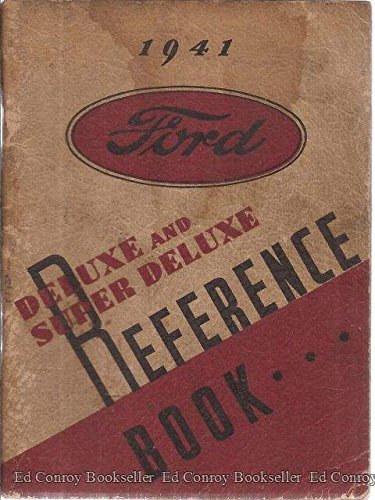
1941 Ford Flathead V8 De Luxe and Super De Luxe Car Owners manual measuring roughly 4-¾ x 6-¼ with 62 pages of information and illustrations regarding maintenance schedules, lubrication, operator controls, general operating instructions and service information for all 1941 Ford De Luxe and Super De Luxe Cars, including the sedan, convertible and station wagon equipped with the 85 horsepower flathead V8 on a 114 inch wheelbase chassis. This Ford Owner’s Manual is brand new and covers all the basic information needed to maintain and use your vehicle, including such things as: Lubrication, Instruments & Controls (speedometer, fuel gauge, ammeter, oil pressure gauge, temperature indicator, windshield wiper, rear view mirror, antenna, light switch, instrument light switch, the choke and throttle buttons, radio receiver, cowl ventilator control, hand brake lever and ignition switch), Starting the Engine, Driving the Car, Battery & Generator, Electrical System, Engine Performance, Distributor, Carburetor Adjustment, Road Trouble, Tires, Cooling System, Wheel Alignment & Steering Gear, Brakes, Shock Absorbers, Lights, Horns and Warranty. This manual includes a handy Index and Specifications & License Data too.

The Pan American clipper ships of the 1930s and 1940s were technological marvels of their time. The years before World War II found the United States faced with international challenges of an economic as well as a military nature. Aided by government regulations and contracts, the Pan Am clippers were, for a time, the only international craft to carry the U.S. flag. Commercially, they rivaled the comfort and popularity of passenger trains and luxurious cruise ships. Militarily, they were unmatched by anything the Germans, Russians, Italians or French could produce. The only long-range aircraft capable of carrying transoceanic payloads, clippers became instantly valuable with the onset of the war. Marketed as the ultimate in commercial–or military–airfare, these flying boats became as much an American icon as the Pan Am logo itself. From the movie screen to the bookshelf, this volume examines the multitude of ways in which the values inherent in Pan American Airways’ clipper ships played out in popular culture. The book discusses the strategies Pan Am used to represent the clipper as a paragon of U.S. interests, values and beliefs. Mirroring the moods of the times, the clipper became a consistent American icon, being associated with the Statue of Liberty and the American eagle. The main focus of the work is the variety of ways in which this iconographic status manifested itself through toys, movies, pulp fiction, comic books and music. Clipper influence is also examined in other unlikely places such as the name of an available car color, car models, restaurant menus and lounge names. An appendix explains different models of the clipper flying boats.
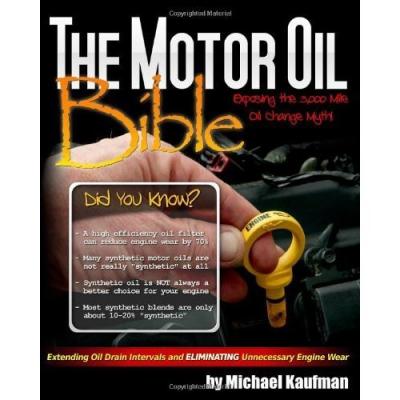
The most comprehensive and easy to read motor oil & filtration manual EVER WRITTEN. The knowledge gained from reading it will ABSOLUTELY save you thousands of dollars over the life of your vehicles. So, What Will You Learn? How to Choose the Right Oil Petroleum, synthetic or blend? Diesel or Gas? API SM, SL, SF? What viscosity: 0w20 or 5w30? Mobil, Castrol, some exotic brand? The questions go on and on, and, without a good working knowledge of motor oils, you can’t really answer any of them in an informed way. “The Motor Oil Bible” will not only give you a foundation on which to stand by educating you about motor oils in general, but will also specifically address all of these questions and numerous others related to the selection of a motor oil for your vehicle. What Do the Technical Specs Mean Once you know the type of oil you need, you’re then left with the task of comparing the various oils that are available that meet your criteria. This can be a daunting task if you don’t really understand what the data on the tech spec sheets means. I’ll explain clearly what each specification means, which ones will be most valuable to you, and how to compare them. Everything You Need to Know About Filtration I don’t care how good your oil is, if you don’t keep it filtered well, it won’t be long before it is worthless. So, it pays to know everything you can about air & oil filtration. I’ll give you the info that nobody else is giving you, the info that will actually help you evaluate which filters are right for you. The Truth About Motorcycle Oils Do you REALLY need a motorcycle specific oil? If so, how do you decide which one to purchase? Should you be using the OEM oil? What about your warranty? I’ll clear the smoke and break the mirrors that have confused this issue for so long.
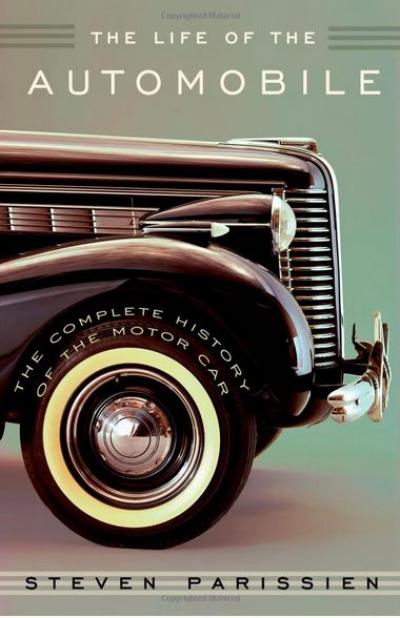
“The Life of the Automobile is the first comprehensive world history of the car.
The automobile has arguably shaped the modern era more profoundly than any other human invention, and author Steven Parissien examines the impact, development, and significance of the automobile over its turbulent and colorful 130-year history. Readers learn the grand and turbulent history of the motor car, from its earliest appearance in the 1880s—as little more than a powered quadricycle—and the innovations of the early pioneer carmakers. The author examines the advances of the interwar era, the Golden Age of the 1950s, and the iconic years of the 1960s to the decades of doubt and uncertainty following the oil crisis of 1973, the global mergers of the 1990s, the bailouts of the early twenty-first century, and the emergence of the electric car.
This is not just a story of horsepower and performance but a tale of extraordinary people: of intuitive carmakers such as Karl Benz, Sir Henry Royce, Giovanni Agnelli (Fiat), André Citroën, and Louis Renault; of exceptionally gifted designers such as the eccentric, Ohio-born Chris Bangle (BMW); and of visionary industrialists such as Henry Ford, Ferdinand Porsche (the Volkswagen Beetle), and Gene Bordinat (the Ford Mustang), among numerous other game changers.
Above all, this comprehensive history demonstrates how the epic story of the car mirrors the history of the modern era, from the brave hopes and soaring ambitions of the early twentieth century to the cynicism and ecological concerns of a century later. Bringing to life the flamboyant entrepreneurs, shrewd businessmen, and gifted engineers that worked behind the scenes to bring us horsepower and performance, The Life of the Automobile is a globe-spanning account of the auto industry that is sure to rev the engines of entrepreneurs and gearheads alike.”
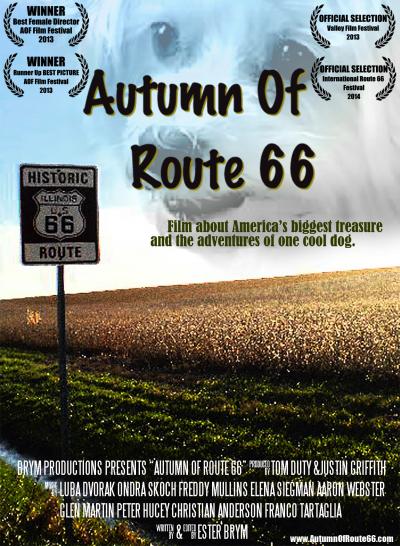
Visually stunning experience that will leave you feeling like you just experienced Route 66 road trip yourself. The journey of America’s oldest highway has been documented many times, but never from this point of view. Sometimes funny, sometimes ironic and sometimes sad but always true, this film goes far beyond simple journey. America’s history and culture are mirrored in this interesting project that speaks to children as well as adults.
Autobooks-Aerobooks 2900 W. Magnolia Blvd. Burbank, CA 91505 (818) 845-0707 Hours: Tuesday-Friday 10:00 AM – 6:00 PM Saturday 10:00 AM – 6:00 PM Closed Sunday and Monday Accept Credit Cards gift cardYES, We have Gift Cards - Click Here AUTOBOOKS IS OPEN...















